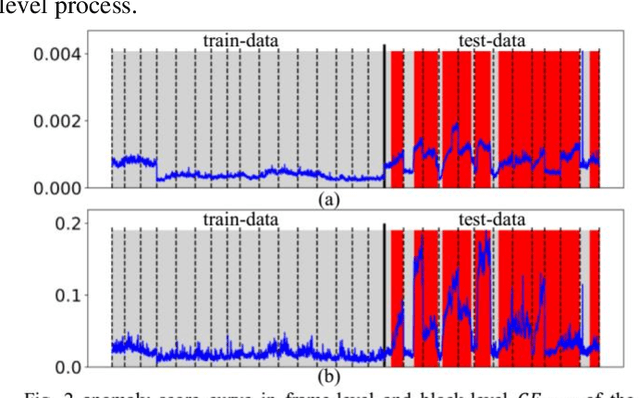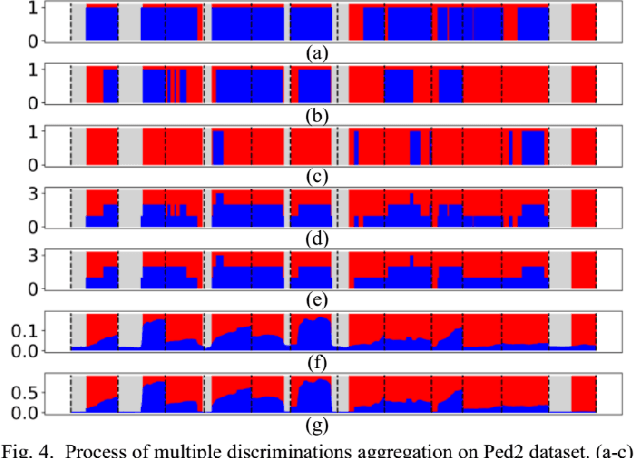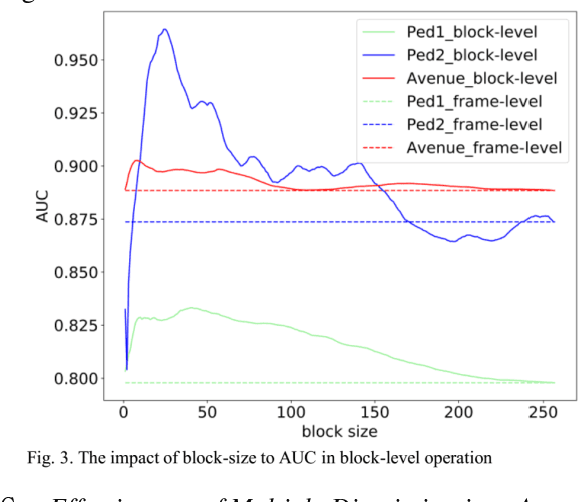A Promotion Method for Generation Error Based Video Anomaly Detection
Paper and Code
Dec 17, 2019



Using the generation error (GE) of a generative neural network (GNN) to detect video anomalies exhibits excellent performance. However, there are two problems when using the trained GNN models to detect anomalies. First, utilizing the frame-level GE to detect anomalies reduces the anomaly saliencies, because anomalies usually occur in local areas. Second, when multiple discriminants (a discriminant is an anomaly score sequence) are available, using the weighted sum method to aggregate multiple discriminants does not always perform effectively, and the weights are hard to tune. To address these problems, we propose an approach consists of two modules. Firstly, we replace the frame-level GE with the maximum of the block-level GEs in the frame to detect anomalies. Secondly, assuming that the higher the anomaly threshold, the more reliable the anomaly detected, we propose a reliable-anomaly (R-anomaly) based strategy to aggregate multiple discriminants. We use the R-anomalies in the auxiliary discriminants to enhance their anomaly scores in the main discriminant. Experiments are carried out on UCSD and CUHK Avenue datasets. The results demonstrate the effectiveness of the proposed method and achieve state-of-the-art performance.
 Add to Chrome
Add to Chrome Add to Firefox
Add to Firefox Add to Edge
Add to Edge